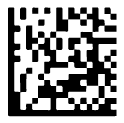Traceability of medicines allows to control up-to-the-minute the history, location and product or lot tracking, throughout the whole chain of distribution.

How does it work?
An individual and unambiguous identification is assigned to each of the commercialized specialties to be able to track them and ensure the control of the products and contribute to the eradication of the circulation of forged products. It is possible to serialize the primary, secondary or tertiary packaging of the products, according to the regulations of each country or the necessary solution.
30%
Pursuant to an estimate of the World Health Organization (WHO), in the emerging and developing countries, up to 30% of all the medicines are forged. And in the developed countries, forged medicines represent 7-15% of all the circulating medicines.
35.000u$s
This represents roughly, 35,000 million U.S. dollars on an annual basis (forged medicines) in frauds and losses both, for the countries and the companies that commercialize them.
75%
According to reports, by the end of 2018 or the beginning of 2019, approximately 75% of the prescribed medicines in the world will be covered by the serialization and traceability Act.
Main benefits
It reduces or eliminates, the forgery of products.
Eases stock and inventory control.
Improves time for dispatch and reception.
Allows controlling the distribution of the products through the whole commercialization chain./h5>
The customer receives legitimate medication with quality, efficiency, guaranteed and proven safety.
Reduces logistical costs since it detects failures before the remittance of the product.
Serialization. Coding of traceability

Data under GS1 standards:
(01) GTIN
(21) Serial number
(17) Expiration date
(10) Number of lot
Serialization and aggregation

Supported identification technologies
RFID

CÓDIGO DE BARRAS LINEAL

DATAMATRIX

Solution for the Reconciliation of Medicines and Medical Products
for regulations in force of serialization and traceability at an international level

Contact
España
Carr. Fuencarral 22, Alcobendas, 28108
+34 910 601 552
Argentina
Italia 415, 1°, Vicente López
+54011 5263-9757
Brasil
Avenida Paulista, 2073 Horsa II Cj.1702
+55 11 91307-6193
Ecuador
Teresa de Cepeda N34-260 y Av. de la República
Email: info@verifarma.com
If you are interested in working with us, contact us at info@www.verifarma.com
We are at your disposal to answer all your consultations and offer you information.
 UE
UE
Government agency: regulated at the country level, guided by European Medicines Verification Organisation (EMVO).
Normative: Falsified Medicines Directive (FMD) / Delegated Act on safety features.
Regulatory scope: serialization, reporting, product verification.
Product scope: most pharmaceuticals.
Participants: all.
Deadline: February 2019.
Codification: GS1 standard.
Reporting: manufacturers reports to European Hub.
Status: ongoing.
 Argentina
Argentina
Government agency: regulated at the country level, guided by the National Traceability System of the ANMAT.
Normative: Resolution 435/2011
Regulatory scope: serialization, reporting, product verification.
Product scope: most pharmaceuticals.
Participants: all.
Deadline: in force since 2011.
Codification: GS1 standard.
Reporting: manufacturers reports to ANMAT.
Status: ongoing.
 Brazil
Brazil
Government agency: regulated at the country level, carried out by the National Health Surveillance Agency (in its initials, ANVISA) through the National Drug Control System.
Normative: Law 111.903 and 13.410/16
Regulatory scope: serialization, reporting, product verification.
Product scope: pharmaceuticals, dental products and veterinary products.
Participants: all.
Deadline: 2016.
Codification: GS1 standard.
Reporting: manufacturers reports to ANVISA.
Status: stand by.
 Ecuador
Ecuador
Government agency: ARCSA, National Regulatory Agency, Control y Vigilancia Sanitaria.
Regulatory: Resolution ARCSA-DE-013-2020-MAFG
Regulatory scope: Individual and univocal identification, verification, monitoring and reporting.
Product range: https://www.controlsanitario.gob.ec/wp-content/uploads/downloads/2020/12/resolucion_arcsa-de-033-2020-mafg.pdf
Participants: Medicines, biological products and medical devices.
Plazos: 6 months + phases.
Codification: Standard GS1.
Report: manufacturers report to ARCSA, National Regulatory Agency, Control and Health Surveillance.
State: regulations issued.
 Russia
Russia
Government agency: public-private organization CRPT
Normative: Government of the Russian Federation Orden No. 791-p
Regulatory scope: Serialization, reporting.
Product scope: Medications.
Participants: Manufacturers, wholesalers, farmacies.
Deadlines: January 2020.
Codification: Standard 2D data matrix and cryptographic code.
Reporting: All supply chain members report to the Chestny Znak.
Status: Ongoing. Experiment has been underway since February 1, 2019.
 China
China
Government agency: CFDA (China Food and Drug Administration).
Normative: Mandatory coding for EDL (Essential Drug List) products.
Regulatory scope: serialization and reporting.
Product scope: all pharmaceutical products.
Participants: manufacturers, wholesale distributors, pharmacies.
Deadline: 31/12/2015, all pharmaceutical products.
Codification: 20-digit EDMC code (government-issued national-product identifiers).
Reporting: Manual uploads to China government.
Status: temporarily suspended.
 Estados Unidos
Estados Unidos
Government agency: FDA (Food and Drug Administration).
Normative: Drug Supply Chain Security Act (DSCSA).
Regulatory Scope: serialization, tracing, verification.
Product Scope: Most pharmaceuticals.
Participants: manufacturers, wholesalers, repackagers, dispensers.
Deadlines: 5/2015 enforcement discretion ends, 7/2015 for dispensers, 11/2017 for manufacturers.
Status: ongoing.
 India
India
Government agency: DGFT (Directorate General of Foreign Trade (DGFT).
Normative: MoHFW (Ministry of Health and Family Welfare). Implementation of the Track and Trace system for export of Pharmaceuticals and drug consignments.
Regulatory scope: barcoding and serialization, aggregation and reporting.
Product scope: all pharmaceutical products.
Participants: manufacturers, wholesale distributors, dispensers.
Deadlines: march 2016 or 2017, depending on company’s classification.
Codification: GS1 Standard.
Reporting: submitted to the DAVA (Drugs Authentication and Verification Application) portal.
Status: ongoing.
 Corea del Sur
Corea del Sur
Government agency: KFDA (Korea Food and Drug Administration).
Normative: Ministry of Health and Welfare notification 2011- 58, “Controlling and indicating barcodes of pharmaceutical products.
Regulatory scope: serialization.
Product scope: all pharmaceutical products.
Participants: manufacturers, importers, wholesale distributors.
Deadline: july 2016 (for manufacturers).
Codification: GS1 standard.
Reporting: reporting requirement for manufacturers in 2016, wholesale distributors in 2017.
 Turquía
Turquía
Government agency: ITS (Turkish Pharmaceutical Track and Trace System).
Normative: Amending Regulation Regarding The Packaging and Labelling Of Medicinal Products For Human Use.
Regulatory scope: serialization, reporting.
Product scope: all pharmaceutical products.
Participants: manufacturers, wholesale distributors, dispensers.
Deadlines: no additional deadlines.
Codification: GS1 standard.
Reporting: all supply chain members report to ITS.
Status: ongoing.